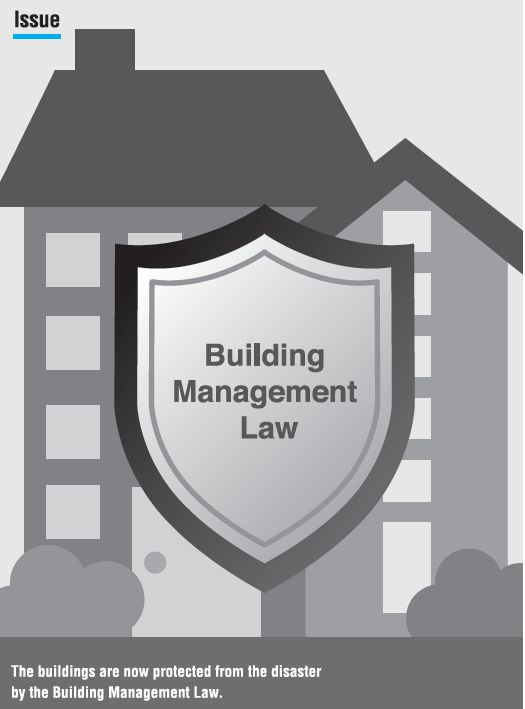The Building Management Act will contribute to safer buildings.

From May 1st, the Building Management Act was enforced. The act was established for the purpose of improving the value in use of the buildings and assuring the safety of people from accidents such as fire and collapse.
First, the frequency of building inspection has changed. Previously, regular inspection was conducted every two years staring ten years after the building’s completion. However, from now on, the regular inspection is conducted within five years of completion and every three years. Furthermore, before the revision, only frequent inspection was carried out for multi-use buildings where safety is doubted such as an old building or building vulnerable to disaster. Now, all buildings with safety concerns are subject to an emergency inspection.
Secondly, fire safety performance of buildings is strengthened. Medical facilities, shelter-use facilities such as local children's centers, multi-use facilities such as academies and accommodation facilities such as motel must reinforce fire safety performance by 2022. The essential parts to be reinforced are sprinklers, *piloti structures, and combustible exterior walls. If the performance reinforcement is not completed by 2022, the owner is subject to up to one year in prison or up to 10 million won in fines.
Lastly, guidelines for building management become specific and strict. The guidelines specify the detailed items such as inspections, implementation instructions, safety management methods, etc. In addition, the local government has to directly designate the inspection agency. In the past, the selection of an inspection agency was conducted by an owner or a manager of a building. The purpose of this policy is for the local government to prevent a poor inspection by making a list of agencies that meet the requirements directly.
Park Seon-Uk (Prof. of Architecture, Kyungnam University) said, “The Building Management Act is regarded as a regulation that emphasizes the importance of building life history management. If the history of the building is well managed, various accidents can be prevented in advance. Old buildings, unlike recent buildings, are likely to be exposed to various risks. Therefore, the law will be an opportunity for a safer building environment.”
By Lee Un-Seok, Desk Editor
stst060500@pusan.ac.kr
*Piloti structure: It is a space with columns and ceilings in the building and no walls. It does not occupy the ground with buildings, but it is vulnerable to earthquakes and can cause great damage in the event of a fire.

